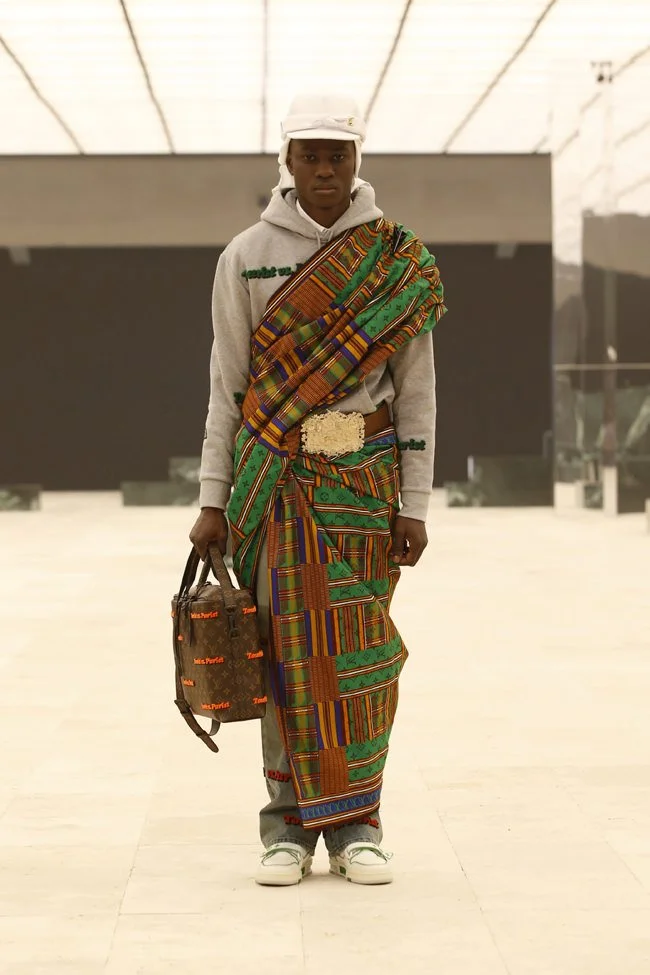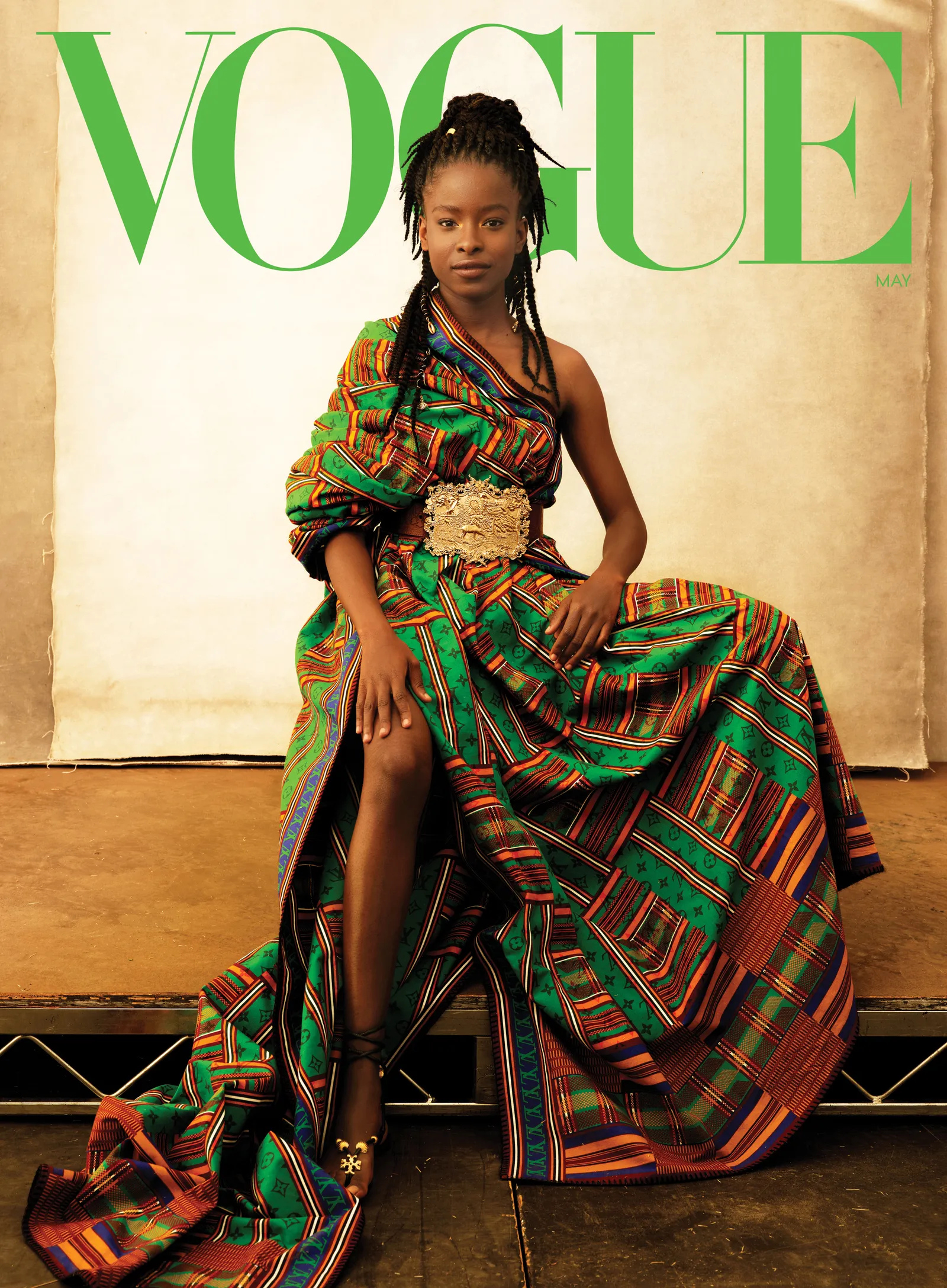Kente Cloth: The Royal Garment of Ghana
The Kente fabric of Ghana can easily be placed as the epitome of something that is both artistic and fashionable. There's something about the texture, mix of colors, intricate patterns, and detailing that feels like it should be on a pedestal at the Cosmopolitan museum.
History and Origins
Century after century, the people of Ghana have passed down this fabric from generation to generation, and now we see it for the culturally rich and artistic fashion piece that it is.
The term “kente” is derived from the Akan word “kenten,” which, in direct translation, means “basket.” The fabric was given this name because its woven patterns are similar to those of baskets.
The creation of the Kente cloth is attributed to the Ashanti tribe. Historians believe that the Ashanti people developed the Kente cloth sometime in the 17th century. Some archaeologists have traced the use of woven, narrow strips of materials to a period before the Ashanti tribe was established. These narrow strips of material were discovered in the Bandiagara caves in Mali, as well as in Medieval Ghana and the Songhai Empire. This led historians and archaeologists to believe that the Ghanaians acquired their weaving methods from other Northern and Western African empires.
How it is made: Materials, Machines, Techniques, and Patterns
The process of making the Kente cloth is based on designing, yarn preparation, raddling, beaming, heddling, reedling, tying up, and weaving.
The Kente cloth is made by using a horizontal loom machine with about four to seven treadles or heddles. The Kente cloth is made by weaving thin strips about four centimeters thick and six feet long together. In the past, the yarns used for making Kente were typically spun from cotton, but after the arrival of the Portuguese, they began using silk, lurex, or rayon. The woven yarn strips are then arranged carefully and sewn together.
The weavers, the symbolism, and the wearers
Traditionally, the Kente cloth is woven by the Ashanti and Ewe tribes, who use the Kente cloth as attire for important events. The men usually weave the kente cloth, while the women sew the woven fabric together. The pattern, colors, and size of the Kente cloth are usually attributed to one of the following: age, gender, marital status, and wealth. The traditional weavers of the Kente cloth refer to it as “Nwentoma,” which means “woven cloth.” They differentiate between traditional hand-woven cloth and factory-made cloth, known as “Ntoma” and Adinkra cloth, by using the block-print technique, which is marked Ntiamu ntoma.
The kente cloth has various types of weaving patterns. The weavers have different names for each weaving style, such as 'ahwepan' (plain weave), 'topreko' (plain weave with simple weft inlays), and 'faprenu' (a double weave technique that hides the warp threads). The Kente is woven in different styles to give it meaning; there are over three hundred types of Kente cloth designs, each with its unique characteristics and features. The kente cloth is known for its distinctive and bright use of colors. Each color has a different meaning behind it. The most popular colors used in making Kente are Red/Gold, Yellow, Green, Purple, Black, and White.
The Kente cloth has deep spiritual and cultural significance to the people of Ghana. It represents more than just a fashionable fabric; they have used it to celebrate their heritage, solidify their impact historically, and make significant political statements. In 1960, shortly after Ghana had gained its independence, the people of Ghana presented a 12X20 foot Kente cloth to the United Nations, which they called “Tikoro nko agyina,” which means “one head does not constitute a council”. This was a symbol intended to mark Ghana's decolonization and establish it as a legitimate presence in the new world.
Kente and modern fashion
The Kente cloth was initially reserved for Ghanaian royalty and was only worn for ceremonies. Eventually, non-royals began to request Kente, but traditionally, if a new design of the Kente fabric is created, the royals are offered it first. If they decline to wear it, then the commoners may be allowed to wear it. Today, it is worn widely by people all over the world. Fashion designers have integrated the Kente cloth into their designs to represent the rich culture in the modern fashion landscape. Such as, the late Virgil Abloh’s 2021 Louis Vuitton Men’s fall collection, which he called “Puritist vs Tourist”. The collection introduced the vibrant Kente cloth to the Louis Vuitton monogram, featuring models wearing Kente cloths with the logo woven into the fabric. He paired the kente with American clothing, such as jeans, Shirts, and hoodies. He said the collection was inspired by a picture of his grandmother in full Kente attire.
He later paid tribute to his Ghanaian heritage again by dressing Amanda Gorman, the Legendary Youth Poet Laureate, in another version of his Kente cloth-inspired collection for her first Vogue cover.
There are a million different ways that the Kente cloth can be used to create statement-making fashion pieces.
The Kente cloth is probably one of the most popular and most recognizable pieces of clothing to ever exist, and it is high time that people began to realize it is a timeless fashion item that will “hopefully” be worn and reinvented over and over again.




